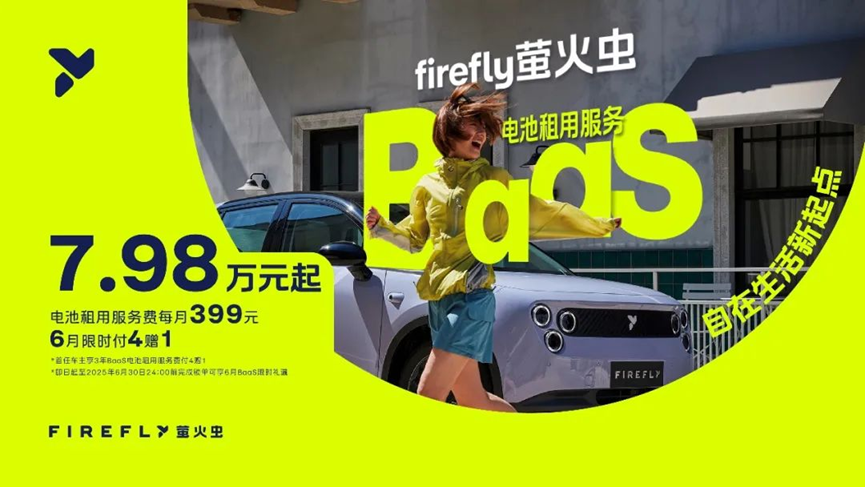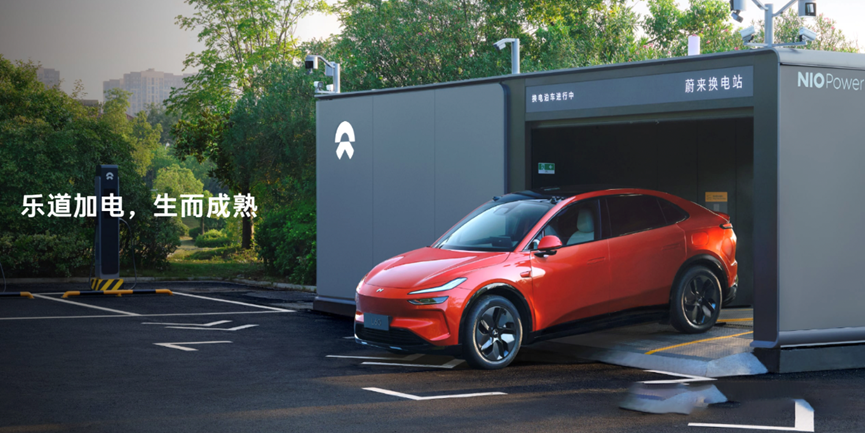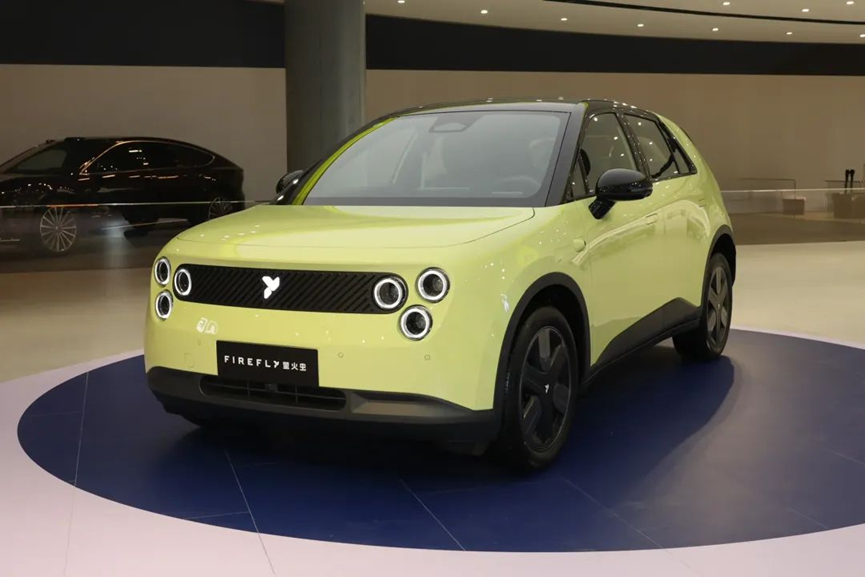Firefly's 79,800 Yuan Offer Targets Xingyuan
![]() 06/30 2025
06/30 2025
![]() 700
700
Recently, Firefly announced the official launch of its Battery-as-a-Service (BaaS) program.
According to official information, the Firefly Freedom Edition starts at 119,800 yuan, while the Glow Edition begins at 125,800 yuan. With the introduction of the BaaS battery rental service, these prices are reduced by 40,000 yuan, making the Freedom Edition available from 79,800 yuan and the Glow Edition from 85,800 yuan. The monthly fee for the battery rental service is 399 yuan.

More remarkable to the market is the limited-time offer of "buy 4, get 1 free" – the first owner will receive a free month for every four paid months within three years, equating to a waiver of two months' fees per year, saving a total of 2,394 yuan over three years. It is reported that this service, originally planned for August, was launched over a month earlier.

Despite being backed by NIO's high-end brand influence, Firefly has maintained its popularity since its launch. However, due to its higher market positioning, sales have fallen short of expectations. Data indicates that Firefly sold only 3,680 units in its first full month of delivery. Against this backdrop, Firefly's BaaS program, which significantly lowers the entry price by 40,000 yuan, is undoubtedly aimed at boosting sales.
As early as 2023, NIO introduced a battery leasing program, separating battery swap benefits from the vehicle price and announcing a price reduction of 30,000 yuan for all its new models. Following the implementation of this adjusted policy, sales surged by over 225%, proving that price adjustments combined with the battery swap model can effectively stimulate sales growth.

Now, Firefly aims to follow in NIO's footsteps. Can it replicate NIO's success?
The launch of the BaaS program allows Firefly to tap into the mainstream small car market priced between 80,000 and 120,000 yuan, where it will compete with models like BYD Seagull, Wuling Bingguo, and Geely Xingyuan. At first glance, Firefly's pricing may not seem competitive, but considering the subsequent monthly battery rental fee of 399 yuan for the BaaS program, and the exclusive offer for first-time buyers in June who enjoy four months paid and one month free for three years of BaaS battery rental service, there is a distinct advantage in long-term usage costs. For instance, the 68,800 yuan Geely Xingyuan may require a higher cost if the battery is expected to degrade and need replacement after six years. In contrast, the 79,800 yuan Firefly does not necessitate concerns about battery degradation, with a six-year battery rental cost of approximately 25,900 yuan, making it more advantageous compared to the battery replacement costs of some competitors.
In terms of configuration, Firefly also holds an edge. Both the Seagull and Xingyuan come standard with only four speakers, whereas Firefly offers 14. Additionally, Firefly includes features like 256-color ambient lighting, which is only standard on the top-spec 97,800 yuan version of Xingyuan. In terms of drivability, Firefly adopts a rear-wheel-drive layout with a five-link independent suspension, a rarity at this price point. For assisted driving, Firefly is equipped with a 120 TOPS computing power chip, featuring intelligent parking assistance, NOP, and active safety configurations such as misacceleration inhibition assistance and emergency active stopping.

However, it's important to note that under the traditional car purchase model, BaaS users do not own the battery and therefore cannot benefit from the battery's residual value when selling the vehicle, leading to a lower resale price for the entire car. If NIO adjusts the BaaS policy to cancel subsidies or alter service content, it could impact user rights. Moreover, Firefly relies on battery swaps. If the popularity of battery swap stations in the user's area is low, users may have to spend time and travel to swap batteries, which is more tedious compared to users who utilize fixed charging piles. It can be said that the popularity of battery swap stations alone limits a significant number of potential buyers.

In summary, Firefly's BaaS program lowers the barrier to car ownership through a combination of "low down payment + monthly rental," but users must accept the trade-off of "long-term rental payments, relinquishing battery ownership, and relying on battery swap services." For users with budget constraints, access to dense battery swap stations, and high-frequency use of battery swaps, the advantages are more pronounced.
Whether Firefly, which combines price concessions with energy replenishment methods, can continue to climb in sales like NIO and become a new sales growth point, time will tell.
(Images sourced from the internet, please remove if infringing)







